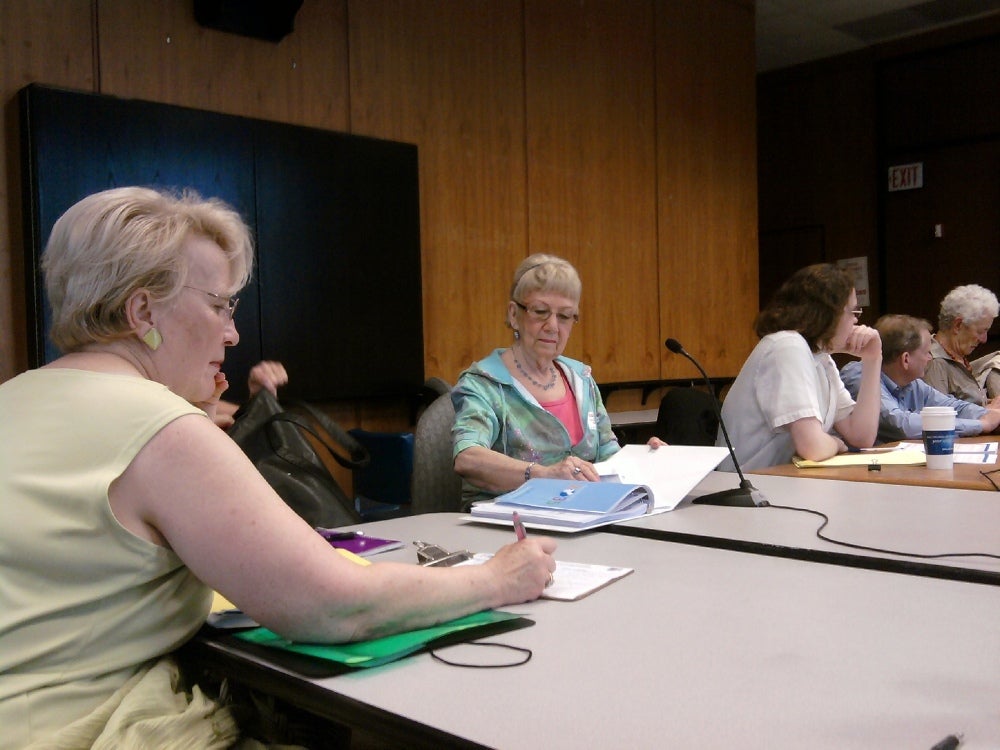If the subway is to reach the Navy Yard, SEPTA planner says, people will need to live there

If Philadelphia wants to extend the subway line to the Navy Yard, as called for in the city-wide portion of the Philadelphia2035 comprehensive plan, residential development needs to be part of the mix, said Byron Comati, SEPTA’s director of strategic planning and analysis.
“It’s a fascinating idea. It’s also a very expensive idea,” he said, estimating the 1.5-mile extension would cost between $500 million and $750 million. That kind of expenditure only makes sense if the place “is an origin and a destination for people,” he told the community leaders and planners gathered for this week’s round table workshop on Philadelphia2035.
“Higher density will provide more steam for a subway extension,” Comati said. “Higher density means residential as well as employment.”
While the session was billed as the last for the city-wide portion of the plan, a lot of discussion centered around the Navy Yard, which makes up a large chunk of the land that will be included in the Lower South District Plan.
Lower South and West Park – the neighborhoods up against West Fairmount Park – are the first of the 18, more-detailed district wide plans that will tackle the future development of clusters of similar neighborhoods.
Steve Huntington, a representative of both the Center City Residents’ Association and the Crosstown Coalition, was concerned that the city-wide vision doesn’t contain enough detail about the goals for the district-level plans. The portions of the vision that talk about the Navy Yard’s future make it sound “sort of like a suburban office park, with none of the classic urban design techniques” he said. This area needs to be something with more mixed uses. “If not 24-hour activity, than at least from 7 am to 10 p.m.,” he said.
“Message received,” said Alan Urek, director of the PCPC’s strategic planning and policy division. He said that feedback received from emails and through the Philadelphia2035 website and public forums was being incorporated into the final version of the plan that would be given to the planning commission.
Huntington said he would like the public to see the final version before that happened. Urek said he was going to have to “trust us.”
Urek and other planners said that the section on Lower South could be fleshed out more – even after the document is accepted by the planning commission. In fact, the document is expected to be updated regularly as it is informed by the more detailed work of the district-level plans. Those district-level plans, which will be done at a rate of two every six months, will also be regularly updated, the planners said. And they will be formally redone as a regular cycle – the moment the last of the 18 plans is done, the first ones will be revisited.
Planning Commission Executive Director Gary Jastrzab pointed out that with the speed of changing technology, for example, items will need to be added that haven’t been thought of yet.
Jastrzab and other planners in the room also indicated that the full development of the Navy Yard – and the point where a subway extension would be practical – is probably decades away. But meanwhile, cheaper options like a dedicated express bus line might do wonders.
The official kick-off of work on the first two plans begins June 7 at a 5:30 p.m. event at the Moore College of Art and Design, where the city-wide vision will also be unveiled to the public.
The Philadelphia City Planning Commission is expected to vote on the city-wide document at its May meeting.
Barbara Lewis and two other representatives of Somerton Civic Association said they had only recently learned about the master planning process, which disappointed them. But they intend to be involved from now on, they said. Richard Redding, director of community planning, told them he was pleased they were there.
Their neighborhood needs help with traffic congestion, Lewis said. She was excited about connecting the city’s neighborhoods to the river, and wanted to see more attempts to do that made in the northeast. She also suggested the city look at creating more trails in wooded land that the state now owns near Woodhaven Road.
These were all things that could be addressed in the district level plan for that area, Redding said. Lewis pointed out that it would be years before her neighborhoods’ plan was tackled, but that was OK – everyone would have more experience with the process by then.
The neighborhood planning process will require advisory groups of residents and civic leaders, business people and landowners, said planner Laura Spina.
Another resident of the northeast, Brian McHale, said that some areas, like the Navy Yard area, have largely regional assets, and it is important that the planning not be done exclusively by the few neighborhood groups in that area. Spina said regional entites like the Port Authority and PIDC would also be included.
Huntington said there should be some way to keep the knowledge that those district-level advisory groups would amass intact.
Redding said keeping the groups intact to continue to update and advise on district-level plans is not something that had been thought of before, but he seemed excited by the idea. “We would welcome that,” he said.
Contact the reporter at kgates@planphilly.com
WHYY is your source for fact-based, in-depth journalism and information. As a nonprofit organization, we rely on financial support from readers like you. Please give today.





